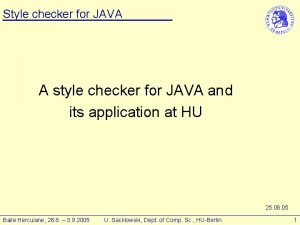Starter Homework checker Using your photocopy of Pages










- Slides: 10

Starter – Homework checker Using your photocopy of Pages 106 – 107 Face book Complete a 1 page (No more no less!) fact file on Mumbai The headings you must use are: Background to Mumbai Key facts (did you know box? ) Industrial History Location problems Environmental factors On a separate page answer questions 1 -5 Pg 107 in full sentences

Mumbai’s Changing Population LO: TO BE ABLE TO EXPLAIN PAST AND CURRENT TRENDS IN MUMBAI’S POPULATION AND WHAT EFFECT THIS HAD ON THE CITY

Recap:

A thousand a day Thousands of people across India move from the countryside to the city every day About 1000 migrants move to Mumbai everyday Mumbai’s population is growing by 3% a year! At present rate, Mumbai’s population doubles every 23 years!

Pattern of spatial growth With increasing population, Mumbai has expanded in size 68 Km 2 the city 370 Km 2 the suburban districts 602 km 2 the metropolitan district (Greater London 607 km 2) New suburbs are developing. Navi Mumbai has been built on the mainland. 2015 – 1 million people lived there (mainly middle class) 60% of Mumbai's population live in slums!

Using the figure below describe the change in Mumbai’s slum population since 1971, compared with the overall population

Changing land use Mumbai is the commercial capital of India. Investment has grown, increasing the number of people employed rapidly. Investment has been greatest in: Manufacturing (Textiles, Food processing & Engineering) Services (Banking, ICT & Call centres) Construction (Housing, Factories & Offices) Entertainment & Leisure (Bollywood, Hotels & Restaurants) All this has put pressure on land in the CBD, making Mumbai one of the world’s most expensive cities, Factories are moving out due to high rents and land costs

Population figure for Greater Mumbai Task: Page 100 – 101 1. Using graph paper create a line graph showing the population of Greater Mumbai over the past 100 years. Population Data 1901: 812, 912 1911: 1, 018, 388 1921: 1, 244, 934 2. Describe the past a present growth in Mumbai’s population, using data from your graph 1931: 1, 268, 936 1941: 1, 686, 127 1951: 2, 966, 902 3. Explain why people move from rural to urban areas – (5 Points) 1961: 4, 152, 056 1971: 5, 970, 575 1981: 8, 227, 382 4. Why does natural increase play such a large role in Mumbai’s population increase? 1991: 12, 600, 000 Extension: Explain why so many migrants are you and likely to get married in Mumbai then rural areas? 2005: 18, 366, 088 2001: 16, 368, 084 2011: 25, 000

Question time…. . Explain the relationship between Mumbai’s economic growth and it’s population growth? (6 Marks)

Homework: Outline push and pull factors that have affected Mumbai’s population growth using the table below. (8 Marks)



















